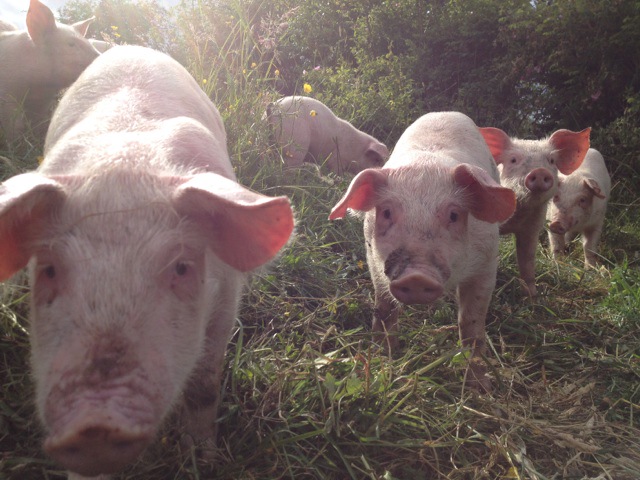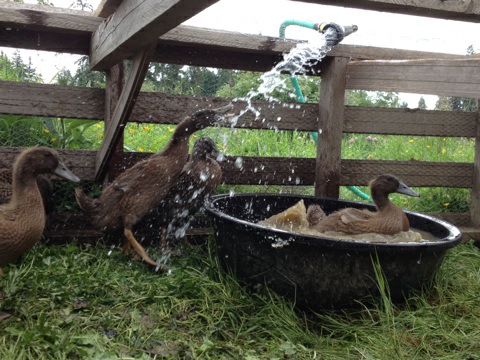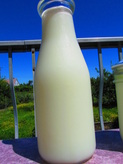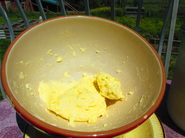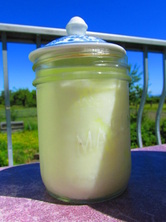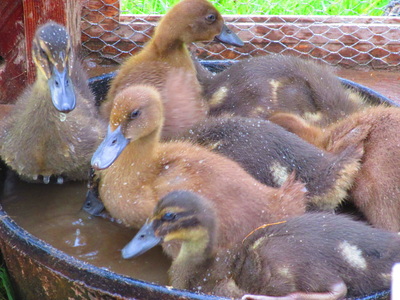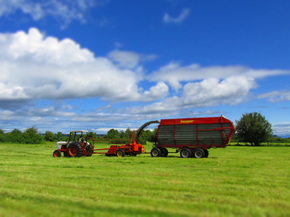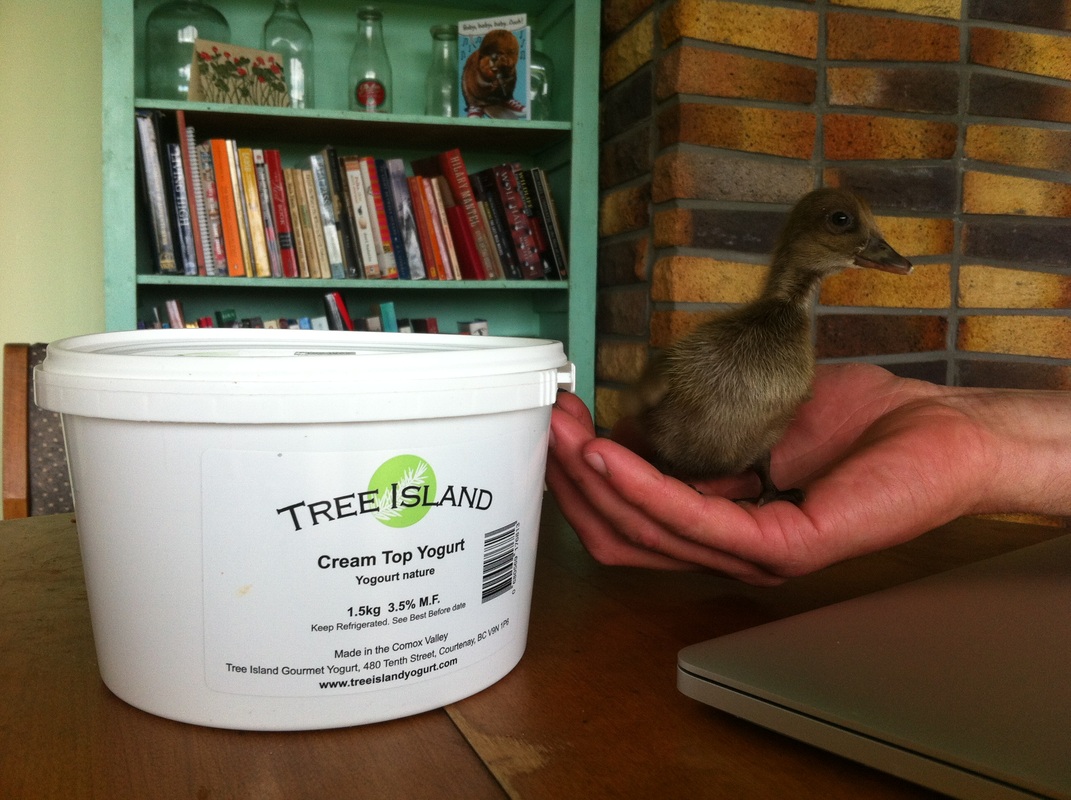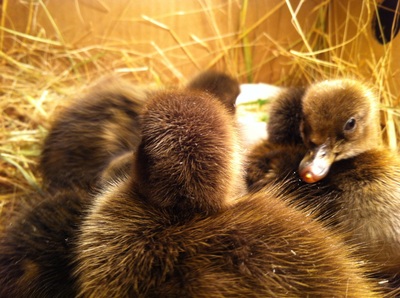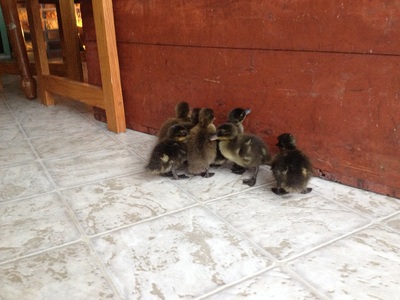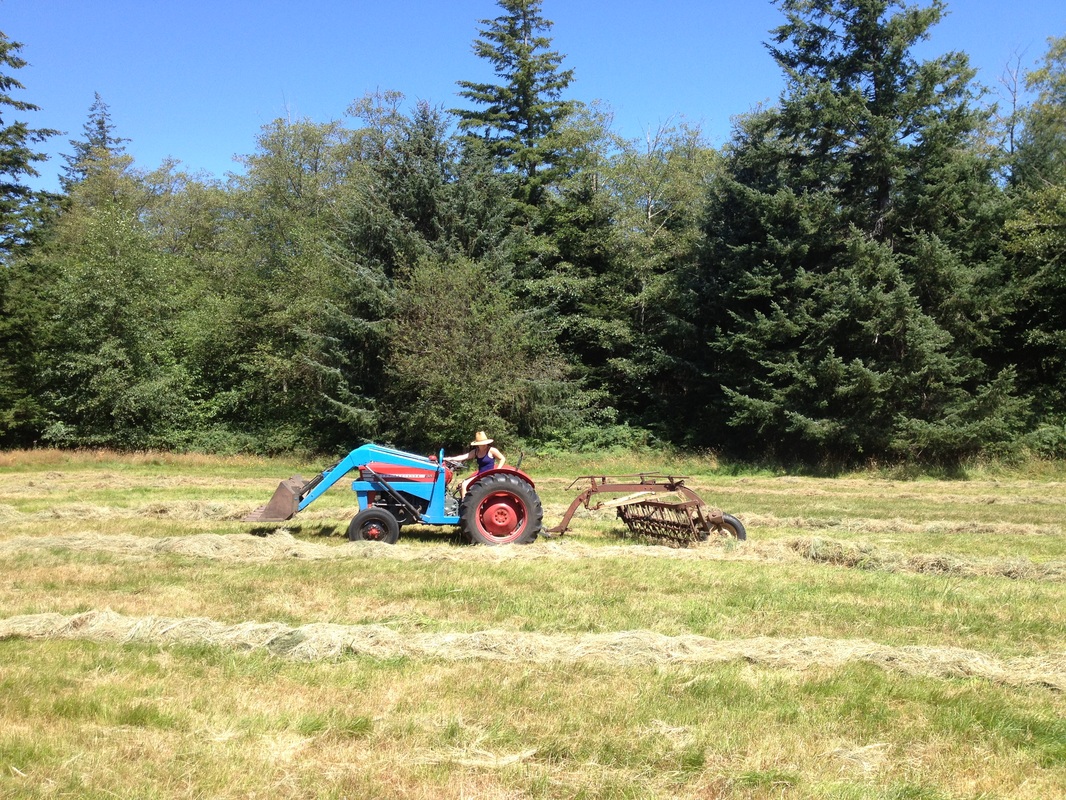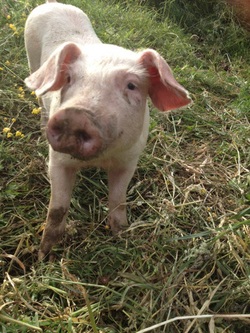 Notorious P.I.G. Notorious P.I.G. In case you were unaware, as I was until a certain someone started calling me this to encourage me to take the lead on the pig operation, a “Swine Herd' is one who herds swine. Now in case you've never spent much time around pigs, as I had not until last summer, you don't so much herd pigs, as you persuade them with food. So 'Swine Food Shaker' would suit me better I think, but alas the original title it seems, has stuck. So, my life as a Swine Herd. I start everyday by being persuaded out of bed by the smell of coffee and oatmeal (much like the pigs, I can be persuaded by food). Then it is time to feed the ducks and milk the cow – not part of swine herd duties, but still very important. After processing the milk, it is official swine herding time. I march out to the pigs and look at them. They snort at me, Lil' Kim (the one pig who seems to love humans for affection as much as she loves them for their food giving abilities) comes to get her daily head and belly rub. I check that there is still water (the tap is set on a level sensitive mechanism that keeps it full at all times) and check the food – a very smart design that the certain someone set up before the pigs arrived. The food part can be a bit of a chore because pig food is heavy and stored further away from the pigs, but a pretty simple scoop-wheel barrow-scoop system every day or two seems to make it fly. Next the fence test. Now piglets are smart and also sensitive animals. So after one or two shocks from an electric fence they seem to keep a pretty good mental note about where the fence is and to not get to close. Some days I don't need to thoroughly check the fence because a pig will check it for me, but others I do a quick jaunt around the pig pen to make sure no grass has grown up or dirt pushed forward to short out the line. After that, looking at the pigs is the next step. Healthy? Happy? Pig-like? Check. Check. Check. Repeat at least twice a day. (Turn on sprinklers during hot afternoons for the pigs to frolic in.)
0 Comments
From left to right - butter, buttermilk, cream, yogurt, whole milk. (as well in the other pictures, frozen yogurt cubes for winter smoothies, an mango, cinnamon yogurt popsicles for now! Yum.) This is how we did it: |
